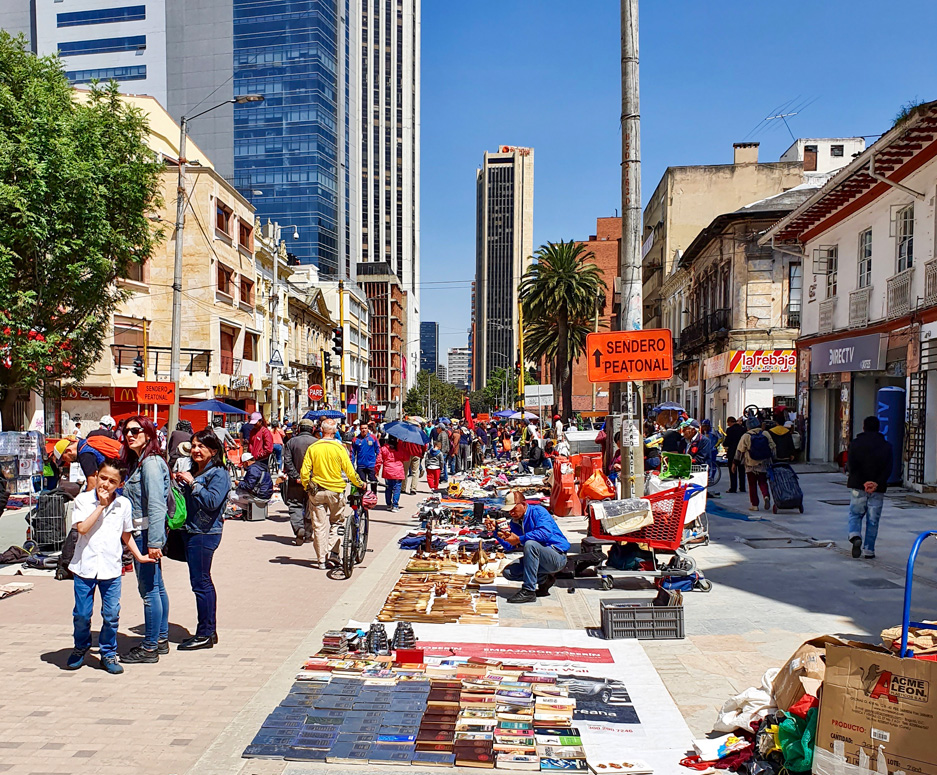The Shifting Atmosphere: A Nation on Edge
I’ve been in Colombia for almost five months now. It has been a truly wonderful time, filled with countless experiences and adventures. However, my residency permit is expiring, and I have to return to Germany.
The atmosphere across the country shifted dramatically in April. Throughout the nation, intense protests against new government reforms have erupted. My Colombian friends are visibly nervous. They warn me of very large demonstrations in Bogotá on May 1st that could quickly escalate. Their advice is clear: I should not venture beyond my hotel.
As I walk through the city, I get a premonition of what’s to come. Shop windows are barricaded everywhere. Police presence is ubiquitous, with units stationed in front of important buildings. Many city walls are covered in graffiti – calls to protest, often with messages hinting at violence. I follow these wall posters with great interest; they unmistakably reflect the country’s mood. There’s a strange quiet hanging over the city. It’s calm, with only a few people out and about. It feels like the calm before the storm. Only the distant sounds of drumming sessions from Parque de la Independencia resonate all the way to the hotel.
May 1st: A City Erupts
May 1st dawns as a rainy day. It rains incessantly, and I initially think this might deter many from protesting. But I am wrong. In the morning, I hear the drums again and look out my window. I can’t believe my eyes. I see multitudes of people, accompanied by drummers, making their way towards Plaza de Bolívar. That’s where the main rallies are held. And they come from all directions; the flow of people seems endless.
It’s a remarkably colorful scene. The rhythm of the drums heats up the atmosphere. To an outsider, it might almost seem as if people are heading to a football stadium. The mood is exuberant, almost joyful.
Over the next few hours, the area around the hotel becomes quiet again. Not much can be heard from the direction of Plaza de Bolívar, which is only 2 kilometers away. Then, the first people start returning. Suddenly, I hear explosions. I see smoke clouds rising into the sky, and the streets become agitated and noisy. The situation has escalated.
Witnessing the Unrest: A City Transformed
People rush past the hotel. Tear gas grenades explode. The city transforms into a powder keg. What unfolds in the following days is difficult for a German to comprehend. Every day brings demonstrations that often degenerate into violent clashes. The destructive fury is unimaginable. I witness street battles with incredible brutality. Across the country, there are reports of dead and wounded. All kinds of groups take to the streets: taxi drivers, motorcyclists, teachers, students, and even indigenous groups arriving in Bogotá from the Amazon region.
However, most of the demonstrations I observe begin very peacefully. They are characterized by a colorful display and the rhythmic pulse of drums. I see many people radiating joy and excitement. In reality, that is exactly what distinguishes Colombians.
I have to postpone my return flight twice. Roads to the airport are blocked, and no taxi driver is willing to take the risk. Nor am I.
On May 12, 2021, I finally reach the airport, which is heavily guarded by special forces. The city does not rest. Especially in the south, clashes erupt every night. I leave Bogotá with a profound sense of anxiety. My friends live in the south of the city.

